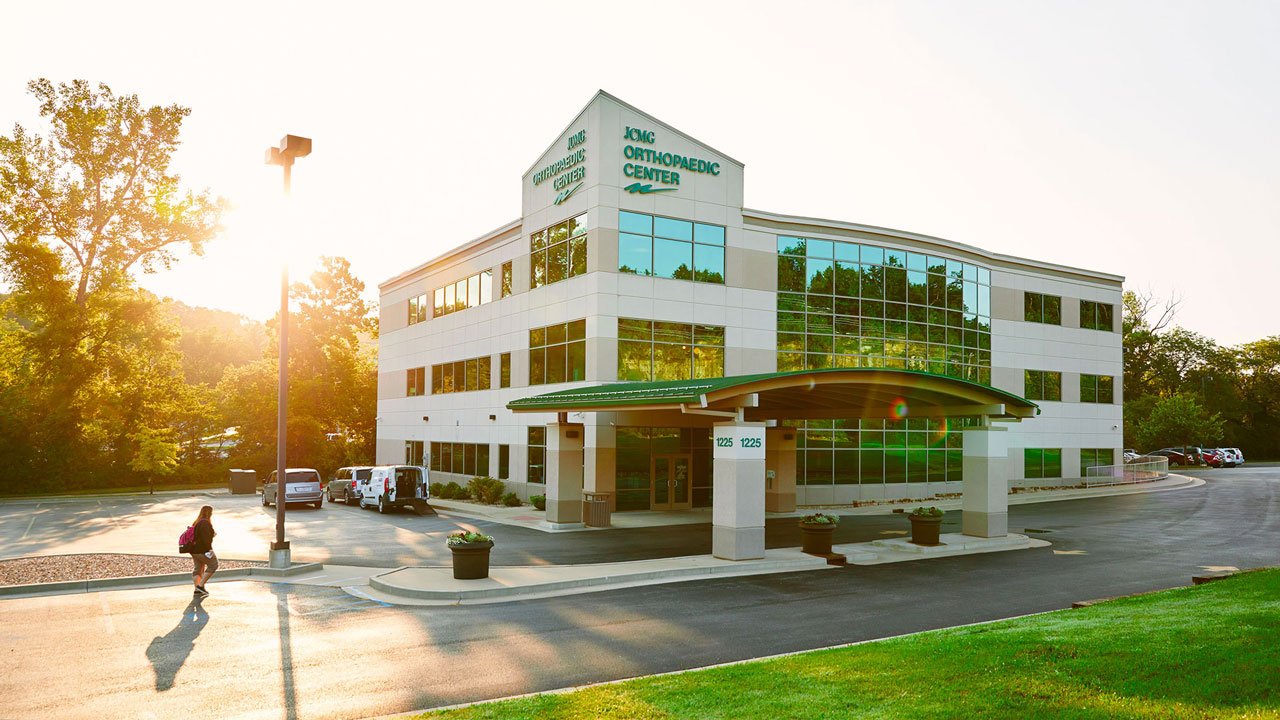A hospital is a healthcare facility that plays a central role in the healthcare system by providing a wide range of medical services, including diagnosis, treatment, surgery, and care for various medical conditions. Hospitals are equipped to handle both routine and emergency medical situations. Here are some key characteristics and aspects of hospitals:
- Medical Staff: Hospitals are staffed by a diverse team of medical professionals, including physicians, nurses, surgeons, specialists, anesthesiologists, radiologists, and other healthcare providers. This multidisciplinary team collaborates to offer comprehensive medical care.
- Facilities and Equipment: Hospitals are equipped with advanced medical equipment, including diagnostic tools like X-ray machines, MRI scanners, and laboratories for blood tests, as well as surgical facilities and operating rooms for a wide range of medical procedures.
- Emergency Care: Hospitals provide emergency medical services and trauma care, making them essential for treating critical injuries and illnesses. They often have an emergency department (ED) for this purpose.
- Inpatient and Outpatient Services: Hospitals offer inpatient services for patients who require hospitalization and outpatient services for those who need medical care but do not need to stay overnight.
- Specialized Care Units: Hospitals often have specialized care units, including intensive care units (ICUs) for critical patients, neonatal intensive care units (NICUs) for premature infants, and various other specialty units like cardiac care, oncology, and orthopedics.
- Maternity and Pediatric Care: Hospitals provide maternity and obstetrics services for expectant mothers, including labor and delivery units. They also offer pediatric care for infants and children.
- Psychiatric Care: Many hospitals have psychiatric units that provide care for individuals experiencing mental health crises or other behavioral health issues.
- Rehabilitation Services: Hospitals may offer physical therapy, occupational therapy, and other rehabilitation services to help patients recover from injuries, surgeries, or chronic conditions.
- Teaching Hospitals: Some hospitals are affiliated with medical schools and serve as teaching hospitals, where medical students, residents, and fellows receive training and conduct research.
- Research and Innovation: Many hospitals are hubs for medical research, contributing to advancements in healthcare treatments, therapies, and technologies.
- Pharmacy Services: Hospitals have on-site pharmacies to dispense medications prescribed by healthcare providers.
- Patient Support Services: Hospitals may provide various support services, including social work, counseling, nutrition services, and patient education to ensure holistic patient care.
- Infection Control: Hospitals maintain strict protocols for infection control to prevent the spread of contagious diseases and ensure the safety of patients and staff.
- Continuity of Care: Hospitals often work closely with primary care physicians and specialists to provide coordinated care for patients, ensuring a seamless transition between hospital and follow-up care.
- Emergency Medical Services (EMS): Hospitals are the destination for emergency medical transportation services, including ambulances, which bring patients to the ED for immediate care.
Hospitals are critical components of the healthcare system and serve as essential resources for communities, offering a wide spectrum of medical services, from routine check-ups to complex surgeries and critical care. Their primary goal is to provide high-quality, safe, and effective healthcare to individuals in need.
Hospitals are healthcare facilities that provide medical treatment, care, and support to patients who are ill or injured. They are equipped with medical professionals, advanced medical technology, and a range of services to diagnose, treat, and manage various medical conditions.
Healthcare facilities, on the other hand, is a broader term that encompasses a variety of settings where healthcare services are provided. This includes hospitals, clinics, nursing homes, rehabilitation centers, and other medical institutions.
What are the key functions of hospitals?
The key functions of hospitals include:
Diagnosis and Treatment: Hospitals are equipped with medical professionals, advanced diagnostic tools, and treatment facilities to diagnose and treat various medical conditions. They provide a wide range of medical services, including surgeries, medication administration, and specialized treatments.
Emergency Care: Hospitals have emergency departments that provide immediate medical attention to patients with life-threatening conditions or injuries. They are equipped to handle emergencies and stabilize patients before further treatment or transfer to specialized facilities if needed.
Inpatient Care: Hospitals provide inpatient care for patients who require overnight stays or extended periods of medical monitoring and treatment. This includes providing a comfortable and safe environment, round-the-clock nursing care, and specialized services for patients with complex medical needs.
Outpatient Care: Hospitals also offer outpatient services, where patients receive medical care without being admitted to the hospital. This includes consultations, diagnostic tests, minor procedures, and follow-up visits. Outpatient care allows patients to receive timely medical attention while minimizing the need for hospitalization.
Rehabilitation Services: Many hospitals have rehabilitation departments that provide physical therapy, occupational therapy, and other specialized services to help patients recover and regain their functional abilities after an illness, injury, or surgery.
Preventive Care and Health Promotion: Hospitals play a crucial role in promoting preventive care and health education. They offer screenings, vaccinations, health check-ups, and counseling services to help individuals maintain good health and prevent the onset of diseases.
Research and Education: Hospitals often engage in medical research to advance knowledge and improve healthcare practices. They also serve as teaching institutions, providing training and education to medical students, residents, and other healthcare professionals.
Community Health Services: Hospitals may offer community health programs and services to address the healthcare needs of the local population. This can include health screenings, health fairs, health education programs, and outreach initiatives to promote wellness and improve access to healthcare.
It’s important to note that the specific functions of hospitals may vary depending on factors such as the size of the hospital, its specialization, and the healthcare system of the country or region.
What role do hospitals play in medical research and education?
Hospitals play a significant role in medical research and education. Here are the key roles they play:
Research: Hospitals often engage in medical research to advance knowledge and improve healthcare practices. They conduct clinical trials, observational studies, and other research projects to explore new treatments, medications, and medical technologies. Hospitals collaborate with universities, research institutions, and pharmaceutical companies to contribute to scientific advancements and improve patient care. Research conducted in hospitals helps in the development of evidence-based medicine and the discovery of new treatment options.
Teaching Institutions: Hospitals serve as teaching institutions, providing training and education to medical students, residents, and other healthcare professionals. They offer clinical rotations and hands-on experience to medical students, allowing them to apply their theoretical knowledge in real-life patient care settings. Hospitals also provide residency programs where newly graduated doctors receive specialized training in various medical specialties. Additionally, hospitals may offer continuing medical education programs to keep healthcare professionals updated with the latest advancements in their fields.
Medical Conferences and Workshops: Hospitals often organize and host medical conferences, workshops, and seminars. These events bring together healthcare professionals, researchers, and experts from various disciplines to share knowledge, present research findings, and discuss advancements in medical science. Medical conferences provide a platform for networking, collaboration, and the exchange of ideas, fostering innovation and improvement in healthcare practices.
Mentorship and Supervision: Hospitals provide mentorship and supervision to medical students, residents, and other healthcare professionals. Experienced physicians and specialists guide and mentor trainees, helping them develop clinical skills, critical thinking abilities, and professional ethics. Mentorship programs in hospitals contribute to the growth and development of future healthcare professionals.
Dissemination of Knowledge: Hospitals play a crucial role in disseminating knowledge and research findings to the medical community and the public. They publish research papers, medical journals, and reports that contribute to the body of medical knowledge. Hospitals also organize educational programs and public lectures to raise awareness about various health conditions, prevention strategies, and treatment options.
It is important to note that the extent of a hospital’s involvement in research and education may vary depending on factors such as its size, affiliation with academic institutions, and available resources.
Sources:
American Hospital Association: Research and Education
National Institutes of Health: Clinical Research in Hospitals
Association of American Medical Colleges: Medical Education
Hospital architecture design
Hospital architecture design refers to the planning, design, and construction of healthcare facilities such as hospitals, clinics, and medical centers. It involves creating spaces that are functional, efficient, and conducive to patient care, while also considering the safety, comfort, and well-being of patients, healthcare professionals, and visitors.
Key Considerations in Hospital Architecture Design:
Functional Layout: Hospital design focuses on creating a layout that optimizes workflow and promotes efficient patient care. This includes strategically locating departments, such as emergency rooms, operating rooms, and diagnostic areas, to minimize travel distances and facilitate smooth patient flow. The design should also consider the separation of public and private areas to maintain patient privacy and confidentiality.
Patient-Centered Care: Hospital architecture design aims to create a healing environment that promotes patient well-being and comfort. This includes incorporating natural light, views of nature, and access to outdoor spaces to enhance the healing process. Patient rooms should be designed to provide privacy, noise reduction, and adequate space for family members.
Infection Control: Hospitals must prioritize infection control in their design to prevent the spread of diseases. This includes incorporating features such as hand hygiene stations, isolation rooms, proper ventilation systems, and easy-to-clean surfaces to minimize the risk of infections.
Safety and Security: Hospital design should prioritize the safety and security of patients, staff, and visitors. This includes implementing measures such as clear wayfinding signage, well-lit corridors, secure entrances, and surveillance systems to ensure a safe environment.
Technology Integration: Hospital architecture design must accommodate the integration of advanced medical technologies and equipment. This includes providing adequate space for imaging and diagnostic equipment, telemedicine capabilities, and electronic medical record systems.
Sustainability: Hospitals are increasingly incorporating sustainable design principles to reduce their environmental impact. This includes energy-efficient lighting and HVAC systems, use of renewable energy sources, water conservation measures, and the use of environmentally friendly materials.
Flexibility and Future Expansion: Hospital design should consider the potential for future growth and expansion. This includes designing spaces that can be easily adapted to accommodate changes in healthcare delivery models, advances in medical technology, and shifts in patient demographics.
It is important to note that hospital architecture design is a complex and multidisciplinary process that involves collaboration between architects, healthcare professionals, engineers, and other stakeholders. The design should comply with local building codes, regulations, and healthcare industry standards.
Sources:
“Hospital Architecture: Designing for Wellness” by Jain Malkin
“Hospital Design and Function” by Richard L. Miller




 3D Fashion Model
3D Fashion Model
 Fashion Model
Fashion Model








